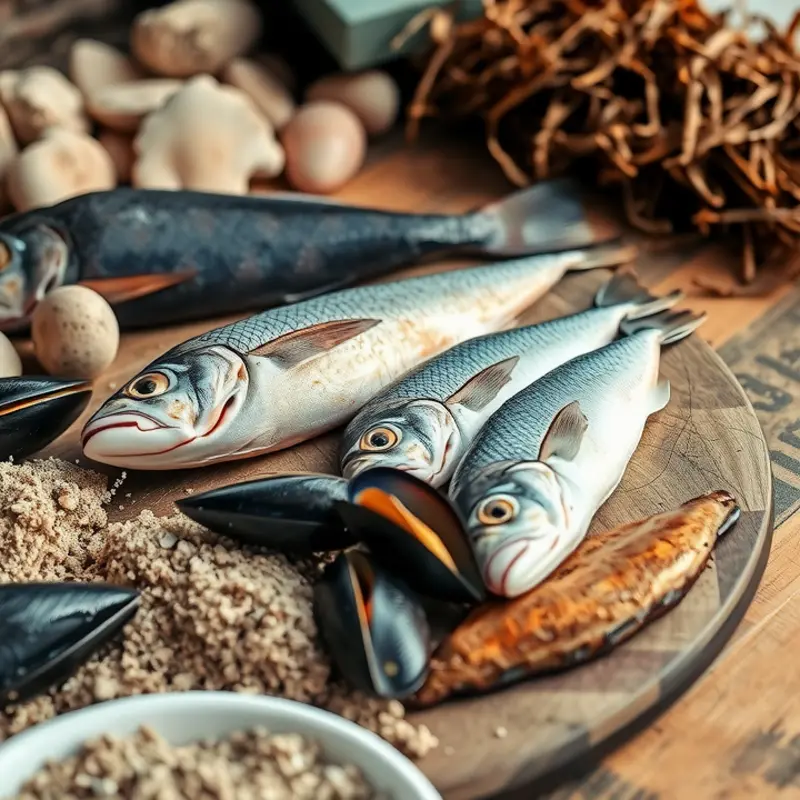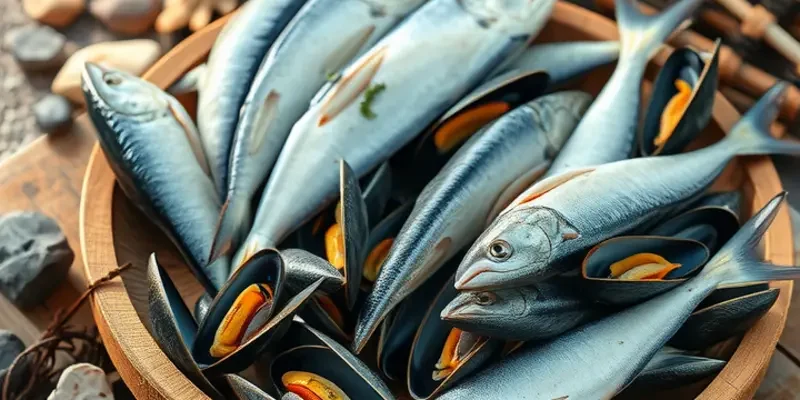Culinary traditions rooted in maritime cultures offer a diverse tapestry of flavors and techniques. From the bustling fish markets of Tokyo to the vibrant street food scenes of coastal Mexico, these cuisines highlight local ingredients, age-old practices, and a deep connection to the sea. Embarking on a journey through the flavors of these coastal regions reveals not just dishes but stories of the people and their environment. In this exploration, we unveil unique maritime food cultures, showcasing the treasures that emerge from oceanic waters and land’s bounty.
Savoring the Sea: Seafood Traditions Across Coasts

Seafood has long been the heart of many coastal cultures, its preparation a testament to time-honored traditions. Across the globe, the methodologies employed to turn the ocean’s bounty into culinary masterpieces are as diverse as the waters they come from. Ceviche, a dish with deep roots in Peru, showcases the art of marination. Freshly caught fish, typically sea bass or sole, is diced and submerged in citrus juices. The acid from the lime or lemon effectively ‘cooks’ the fish without heat, allowing the delicate flavors of the sea to shine through. This method contrasts with Japan’s sushi, where raw fish is elevated through precision and simplicity. Slices of tuna, salmon, or eel are meticulously paired with vinegared rice, wasabi, and seaweed, creating a balanced harmony of taste and texture.
On the other side of the world, the French have mastered the art of seafood soups and stews. Bouillabaisse, originating from the coastal town of Marseille, transforms assorted fish and shellfish into a broth enriched with saffron, herbs, and spices. Smoking and salting, practices revered by many northern communities, both preserve and enhance. In Scandinavia, salmon is often cured with salt, sugar, and dill to produce gravlax, a dish as flavorful as it is functional for preservation in colder climates.
These seafood traditions are deeply intertwined with their respective cultural legacies, offering more than just nourishment. They tell stories of endurance, adaptation, and the unyielding bond humans share with the sea. Such techniques are not only about preservation but also about honoring the natural flavors of the catch. Many maritime communities, understanding the importance of sustainability, employ artisanal fishing methods, ensuring the delicate balance of marine life isn’t disrupted. This mindful approach is a reminder of the connection between food tradition and environmental stewardship efficient snack prepping.
From lavish dishes to humble suppers, seafood remains pivotal in celebrations and daily life across coasts. In Spain, the rich tradition of paella, dense with prawns and mussels, reflects a communal spirit, bringing people together around hearty platters. Whether it’s Norway’s dried lutefisk or Italy’s pasta alle vongole, the world’s coasts offer a stunning array of seafood dishes. By respecting these marine treasures, maritime cultures ensure that the art of savoring the sea endures for generations to come.
Beyond the Waters: Land-Based Ingredients in Coastal Cuisine

The symphony of flavors in coastal cuisine is not just a tribute to the sea; it is a harmonious blend of land and sea. Coastal communities have mastered the art of pairing freshly caught seafood with local produce, grains, and spices, creating culinary masterpieces that reflect their diverse cultures and environments.
Take, for example, the iconic Seafood Paella from Spain. This dish melds tender morsels of seafood with saffron-laden rice, incorporating land-grown ingredients like tomatoes, peas, and bell peppers. The resulting dish is a colorful feast for the senses, the saffron bringing an aromatic depth that enhances the natural sweetness of the seafood.
In the bayous of Louisiana, Creole cuisine weaves together a tapestry of flavors from different cultures. Here, the sea’s bounty meets a spiced medley of land ingredients like onions, bell peppers, and celery — the so-called ‘Holy Trinity’ of Creole cooking. These ingredients serve as the base for beloved dishes like Gumbo and Jambalaya, where smoked sausage adds warmth and complexity. This fusion showcases how effectively these cultures blend the robust flavors of the earth with the fresh vitality of the sea.
Further south, along Thailand’s coastlines, seafood is frequently paired with aromatic herbs and spices such as lemongrass, galangal, and kaffir lime leaves. These ingredients, harvested from the land, beautifully complement the richness of fresh shrimp or fish, resulting in dishes like Tom Yum Goong, a soup that balances hot, sour, salty, and sweet flavors. This dish exemplifies how land ingredients can elevate seafood, turning a simple broth into a complex culinary experience.
In the Italian region of Liguria, Cioppino is a testament to the seamless blend of land and sea. Originating from port cities where fishermen utilized whatever was fresh, this stew combines fish, shellfish, and tomatoes with herbs like basil and parsley. The result is a dish that feels both hearty and light, every bite capturing the essence of its maritime origin while honoring its terrestrial accompaniments.
These examples of coastal cuisines remind us of the sustainable and symbiotic relationship between land and sea. By pairing seafood with the right companions from the earth, chefs and home cooks alike can enhance flavors and respect environmental resources. For those interested in exploring more about how to optimize meal ingredients sustainably, this guide on alternative vegetable oils offers valuable insights into making thoughtful ingredient choices.
The blend of sea and land ingredients is a narrative steeped in history, tradition, and innovation. Each dish reflects its geographical and cultural context, telling a story that transcends the simplicity of its ingredients. By embracing both land and sea, coastal cuisines continue to evolve, preserving and celebrating the rich tapestry of global culinary traditions.
Final words
Maritime food cultures exemplify the intricate bond between communities and the resources offered by the ocean and land. From the creative utilization of seafood to the remarkable integration of local ingredients, these culinary traditions reflect the soul of each region. As we savor these unique flavors, we also appreciate the heritage and stories that define these dishes, celebrating the craftsmanship and passion of those who create them. By exploring maritime cuisines, food enthusiasts and culturally-curious readers alike can embark on a delicious journey that transcends borders and connects us through the universal language of food.








